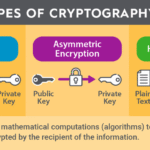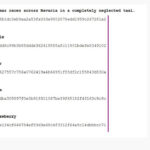In the realm of modern computing, data security is paramount. Have you ever pondered the intricacies of cryptography and how vital it is to protect information? The Advanced Encryption Standard (AES) is widely recognized as one of the most prominent encryption algorithms. It secures sensitive information across diverse applications—from online banking to state secrets. Yet, with the continual growth of data processing requirements, a question arises: how can we expedite encryption while preserving robust security? Enter the Advanced Encryption Standard New Instructions (AES NI), a treasure trove of solutions designed to enhance the performance of AES at the hardware level.
AES NI is a suite of instructions inserted directly into the central processing unit (CPU) architecture to substantially accelerate encryption and decryption processes. This innovative technology is engineered to leverage the capabilities of x86 processors, allowing cryptographic operations to be executed with remarkable efficiency. By facilitating the movement of cryptographic computations from software to hardware, AES NI addresses the pressing need for swifter encryption, freeing computational resources to focus on other tasks.
One of the cornerstones of AES NI is its ability to eliminate the computational overhead typically associated with software-based encryption methods. Traditional AES implementations often rely on complex mathematical computations that can bog down general-purpose CPUs, leading to significant latency. For example, during a high-traffic event when hundreds of thousands of encryption requests might be simultaneously processed, traditional methods can become a bottleneck. AES NI mitigates this risk by providing a streamlined pathway, empowering CPUs to execute encryption with agility previously thought unattainable.
The architecture of AES NI is not just a mere enhancement; it integrates a series of low-level assembly instructions that handle core operations within the AES algorithm. Specifically, instructions such as AESENC, AESENCLAST, AESDEC, and AESDECLAST perform the fundamental rounds of encryption and decryption. Each instruction is optimized to minimize the number of processor clock cycles required, thereby maximizing throughput without sacrificing security. As a result, not only does it quicken processes, but it does so in a manner that remains compliant with the stringent requirements of the AES standard.
For all its advantages, implementing AES NI can pose a challenge for developers. The hardware-level integration means that certain legacy systems, which lack the necessary instruction set support, may find themselves at a disadvantage. Developers must adeptly navigate this compatibility landscape, ensuring that their software solutions can gracefully fall back to traditional AES implementations when running on older hardware. This necessitates an astute understanding of both the technical specifications of the hardware in question and the desired security outcomes.
The necessity of embracing AES NI transcends mere performance improvements; it’s also about ensuring the longevity of cryptographic systems in a world of ever-evolving threats. As computational power continues to surge, attackers are constantly innovating methods to breach cryptographic barriers. AES NI not only accelerates encryption but can also bolster defenses. Its hardware nature makes it more resistant to certain types of attacks, like side-channel attacks, where an adversary tricks a processor into revealing sensitive data through timing analysis or power consumption patterns. By using AES NI, developers can fortify their systems against these modern attack vectors.
Beyond the technical specifications, the implications of adopting AES NI are far-reaching. Businesses and organizations that leverage hardware acceleration for encryption will likely experience a competitive edge. Faster transaction processing is crucial in environments such as e-commerce, cloud computing, and secure communications. With data breaches costing organizations millions and negatively impacting customer trust, the industry is urged to make strategic investments. AES NI serves not only as a tactical advantage but also as a foundational pillar upon which organizations can construct robust security frameworks.
AES NI’s integration into systems is becoming increasingly mainstream. Major operating systems, including Windows and Linux, provide built-in support for these instructions. This universal acceptance signifies a paradigm shift in how encryption is approached, pushing developers towards adopting hardware-based solutions with confidence. As this technology proliferates, its impact on the cybersecurity landscape becomes more profound, leading to an environment where data privacy is not only a priority but a standard.
Despite the numerous benefits, there is still an air of scrutiny surrounding AES NI. Some experts question whether reliance on hardware-level security could introduce unforeseen vulnerabilities. As with any technology, it’s essential to continually assess and fortify systems against evolving threats. AES NI is a leap forward, but it must be part of a holistic approach that incorporates secure software practices, up-to-date protocols, and continuous monitoring.
In conclusion, AES NI emerges as a formidable ally in the ongoing struggle for data security in an increasingly digital world. By expediting encryption at the hardware level, it transforms the efficiency of cryptographic processes while reinforcing defenses against contemporary attacks. Although there are challenges associated with its implementation, the benefits undoubtedly usher in a new era of security, where speed and security coexist harmoniously. Organizations that embrace this evolution will not only enhance their resilience in the face of cyber threats but will also position themselves as leaders in the quest for secure data transactions. The future of encryption lies firmly in the hands of those who dare to explore the potential embedded within hardware-assisted cryptography.








Leave a Comment